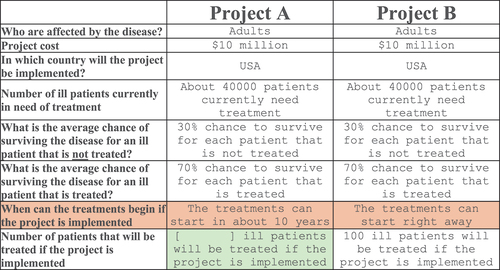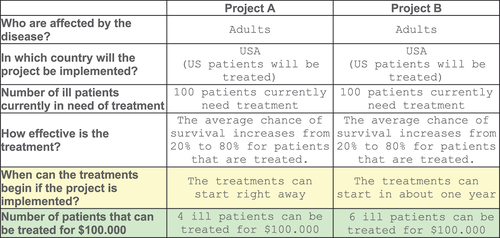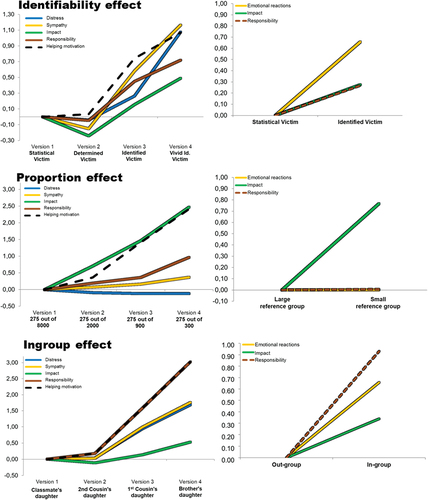Figures & data
Table 1. Key terms used in this review.
Table 2. Summary of the eight beneficiary effects, including beneficiary attributes that increase helping, with their suggested psychological mechanisms and profile in terms of evaluability (EV), justifiability (JU), and prominence (PR).
Figure 1. Example of the matching task in the temporal effect dilemma in Erlandsson et al. (Citation2020).

Table 3. Distribution of preferences in each dilemma expressed with matching and with forced choice in Erlandsson et al. (Citation2020). For preferences expressed with matching, “equally valued” denotes the proportion of participants who wrote 100 in the blank box in each matching task. For preferences expressed with forced choice, different rows illustrate how participants who expressed different preferences in the matching task choose during the choice task.
Table 4. Mean attractiveness-rating of the helping projects in separate and joint evaluation, and number of participants preferring each project in joint evaluation and forced choice in Erlandsson (Citation2021).
Figure 2. Two helping projects in joint evaluation or forced choice in Erlandsson (Citation2021).

Figure 3. Participants’ emotional reactions (distress and sympathy), perceived impact and personal responsibility when varying identifiability, rescue proportion and ingroupness. Left column illustrates results from studies 1–3. Right column illustrates results from study 4 in Erlandsson et al. (Citation2015). Reprinted from Erlandsson et al. (Citation2015). Emotional reactions, perceived impact and perceived responsibility mediate the identifiable victim effect, proportion dominance effect and in-group effect respectively. Organizational behavior and human Decision Processes, 127, 1–14, with permission from Elsevier.

Data availability statement
Data sharing is not applicable to this article as no new data were created or analysed in this study.
